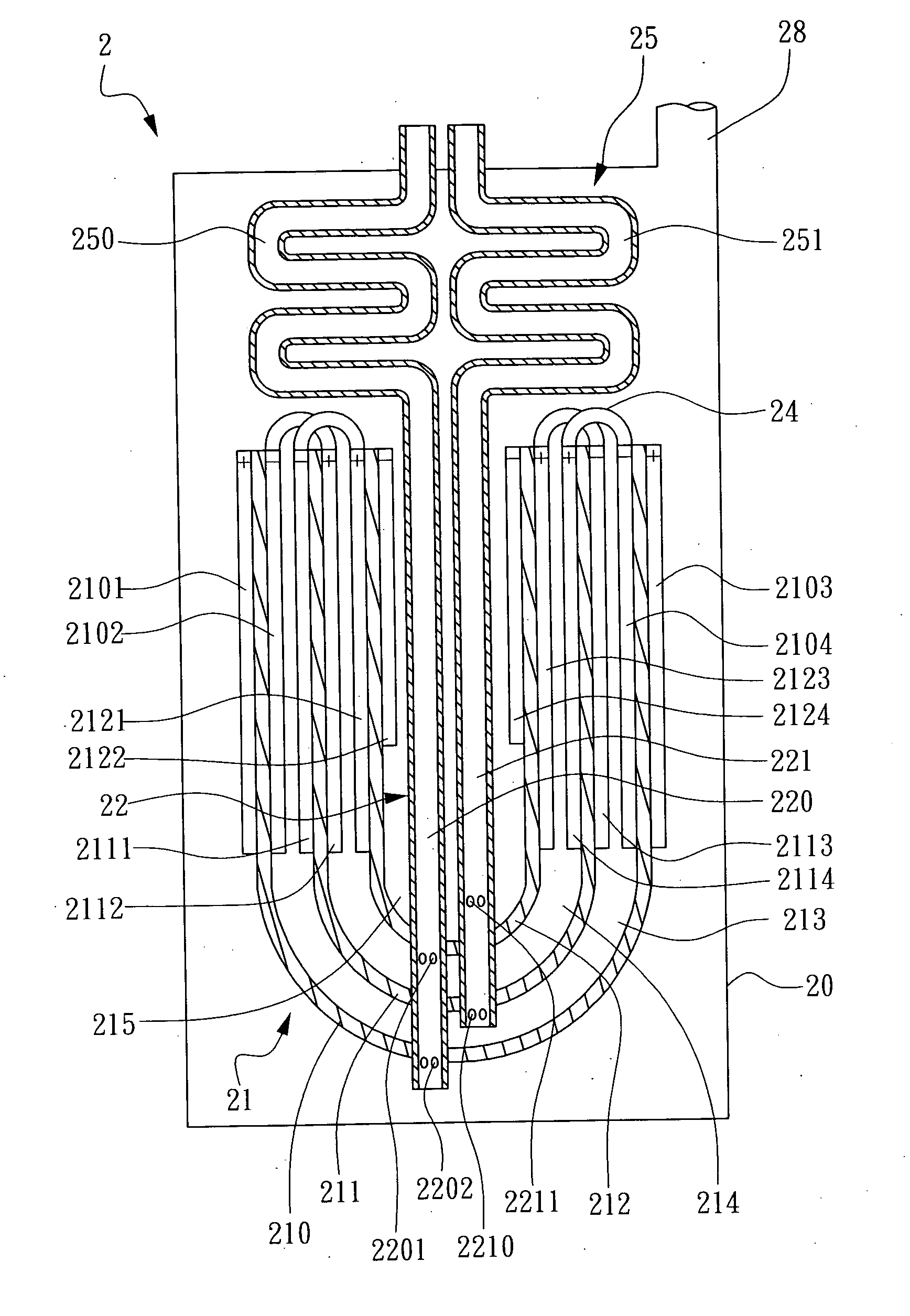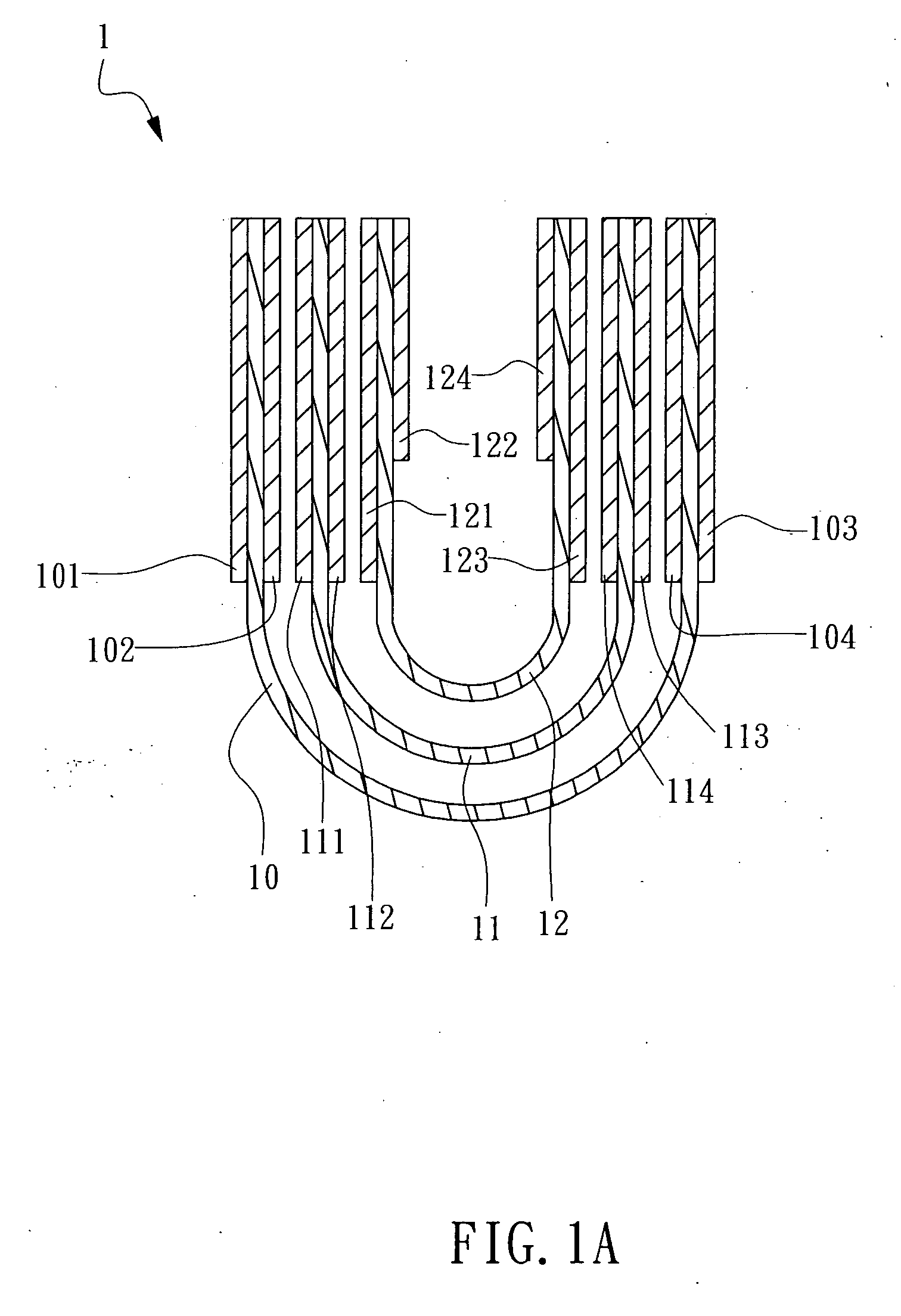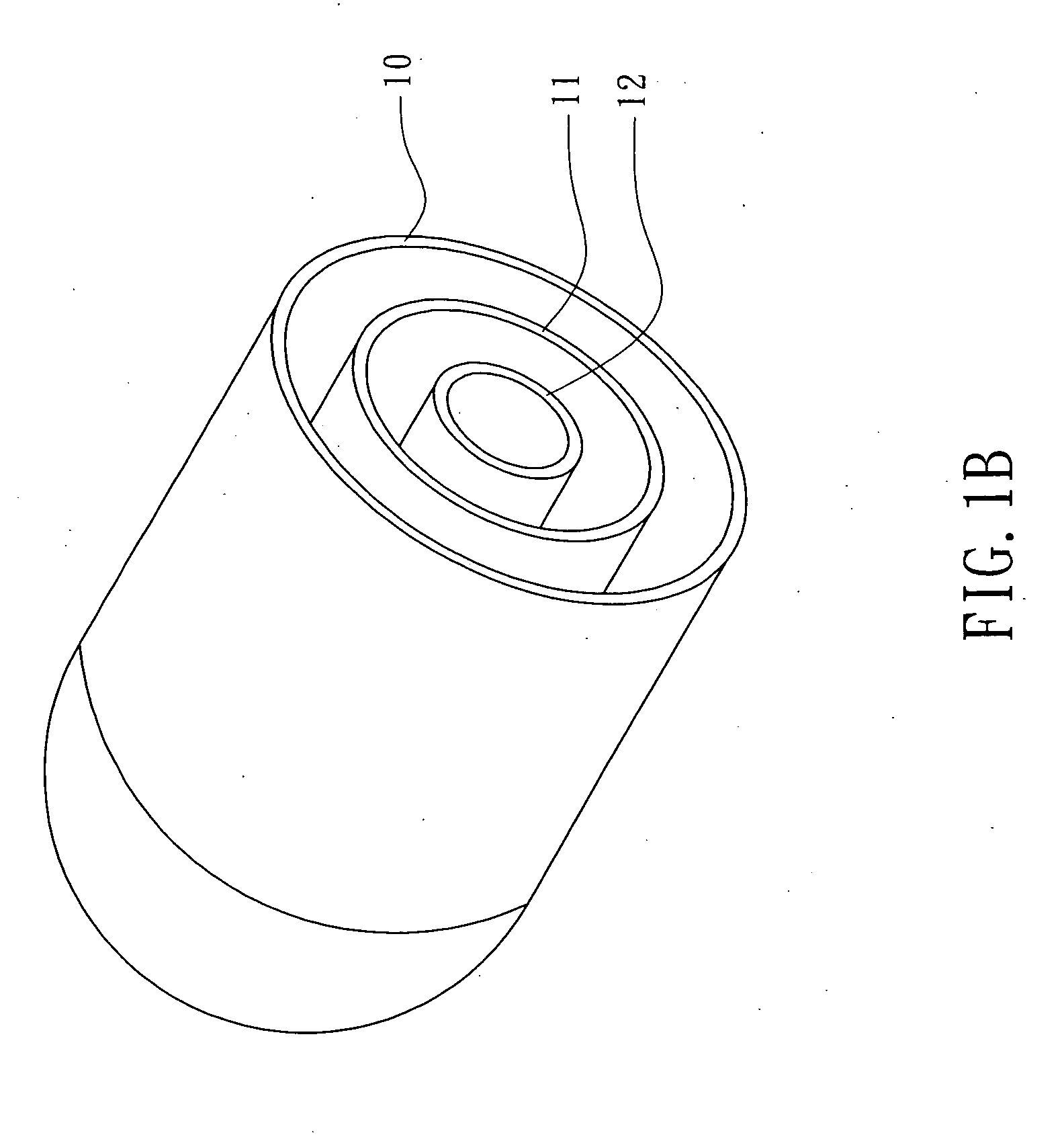Solid oxide fuel cell of multiple tubular electrodes
- Summary
- Abstract
- Description
- Claims
- Application Information
AI Technical Summary
Benefits of technology
Problems solved by technology
Method used
Image
Examples
Embodiment Construction
[0038] For your esteemed members of reviewing committee to further understand and recognize the fulfilled functions and structural characteristics of the invention, several preferable embodiments cooperating with detailed description are presented as the follows.
[0039] Please refer to FIG. 1A and FIG. 1B, which are respectively a sectional view of the plural concentric-arranged tubular electrodes of a solid oxide fuel cell and a three-dimensional diagram showing the assembly of a plurality of concentric-arranged tubular electrodes according to a preferred embodiment of the present invention. The electrode structure 1 of a solid oxide fuel cell of the invention is comprised of a plurality of tubular electrodes, being concentrically arranged to form a plurality of reaction chambers therebetween while enabling the polarity of a surface of any one of the plural electrodes to be the same as that of the corresponding surface of a neighbor electrode faced thereto. In this preferred embodi...
PUM
 Login to View More
Login to View More Abstract
Description
Claims
Application Information
 Login to View More
Login to View More - R&D
- Intellectual Property
- Life Sciences
- Materials
- Tech Scout
- Unparalleled Data Quality
- Higher Quality Content
- 60% Fewer Hallucinations
Browse by: Latest US Patents, China's latest patents, Technical Efficacy Thesaurus, Application Domain, Technology Topic, Popular Technical Reports.
© 2025 PatSnap. All rights reserved.Legal|Privacy policy|Modern Slavery Act Transparency Statement|Sitemap|About US| Contact US: help@patsnap.com



